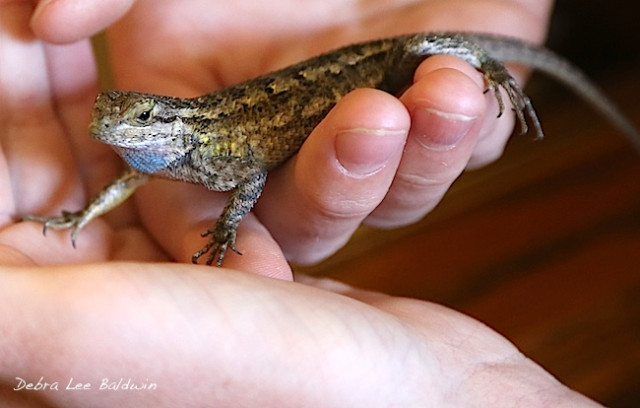 If you garden in the Southwest, doubtless you have Western fence lizards (Sceloporus occidentalis), also known as blue bellies. They do push-up displays on boulders and scurry if you get too close. They’re part of my garden’s ecosystem, and I’m grateful to them for eating insects. Other than that, I seldom gave them a thought…until recently.
If you garden in the Southwest, doubtless you have Western fence lizards (Sceloporus occidentalis), also known as blue bellies. They do push-up displays on boulders and scurry if you get too close. They’re part of my garden’s ecosystem, and I’m grateful to them for eating insects. Other than that, I seldom gave them a thought…until recently.
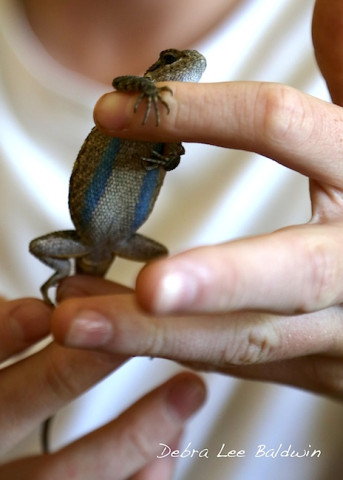 Boys visited this summer—my 6-year-old grandson, and Andrew, 13, my husband’s second cousin from Denver. Naturally we went hunting in the garden.
Boys visited this summer—my 6-year-old grandson, and Andrew, 13, my husband’s second cousin from Denver. Naturally we went hunting in the garden. 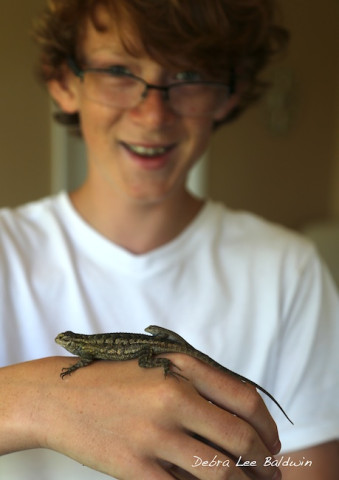
I had no idea lizards were so easy to catch. When they’re sunning themselves in the early morning is a good time—their blood isn’t warm yet and they’re lethargic.
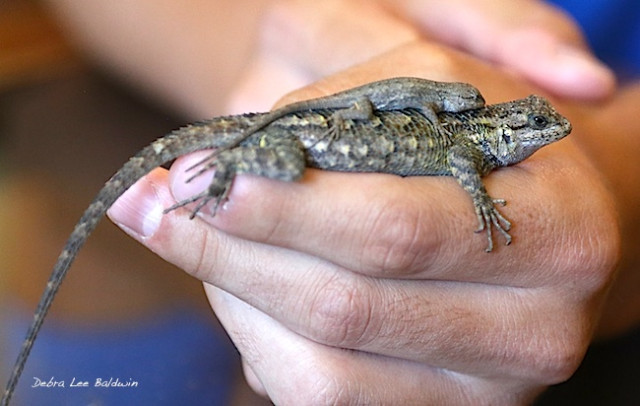
We made terrariums and provided little saucers of water, complete with cave-like shelters of wood or pottery.
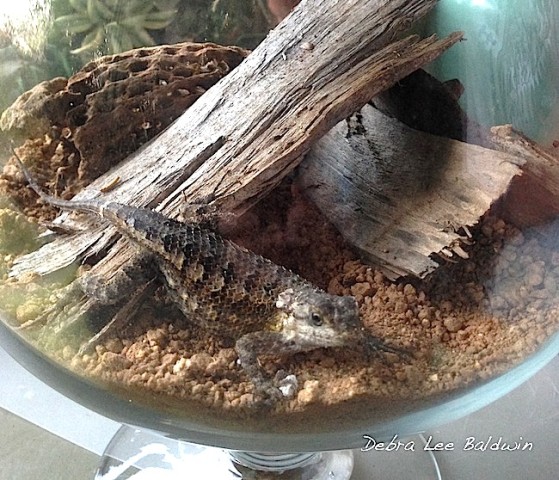
More than once I thought a lizard had escaped and then noticed a tail emerging from a lizard-shaped lump in the sand. We fed them live beetles from the garden and pet-store crickets.
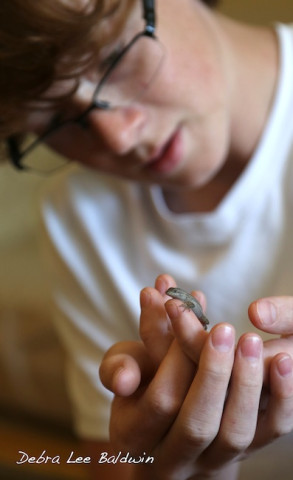
Here’s Andrew with two lizards he caught while here. Isn’t the tiny one about as cute as a critter can get?

Surprisingly, they don’t mind being held. Evidently they like the warmth.
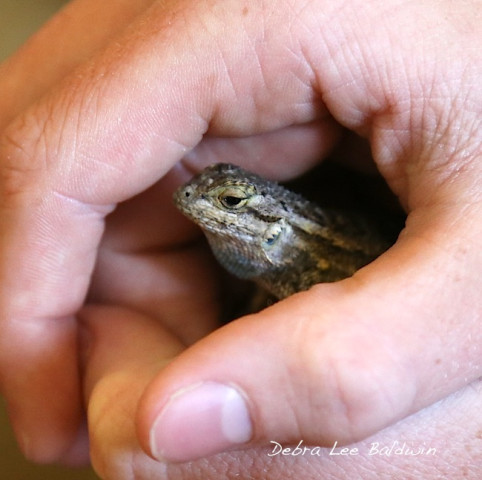
Lizards occasionally fall into ornamental pots and can’t get out, so I’ve put “lizard ladders” in them—a stick that extends to the rim. It’s as much for my benefit as theirs. I don’t enjoy disposing of stiff lizards.
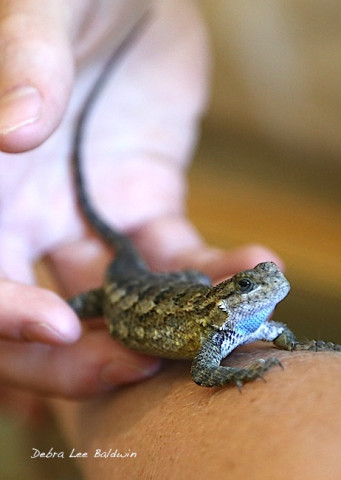
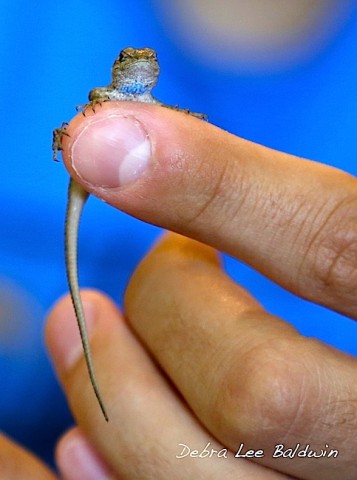 Males are territorial, which puts things into perspective, doesn’t it? What I consider “my” garden is actually theirs.
Males are territorial, which puts things into perspective, doesn’t it? What I consider “my” garden is actually theirs.
